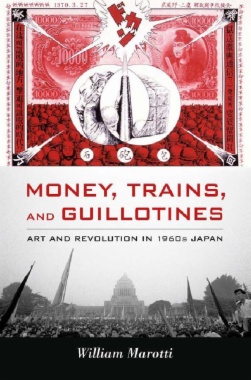During the 1960s a group of young artists in Japan challenged official forms of politics and daily life through interventionist art practices. William Marotti situates this phenomenon in the historical and political contexts of Japan after the Second World War and the international activism of the 1960s. The Japanese government renewed its Cold War partnership with the United States in 1960, defeating protests against a new security treaty through parliamentary action and the use of riot police. Afterward, the government promoted a depoliticized everyday world of high growth and consumption, creating a sanitized national image to present in the Tokyo Olympics of 1964. Artists were first to challenge this new political mythology. Marotti examines their political art, and the state's aggressive response to it. He reveals the challenge mounted in projects such as Akasegawa Genpei's 1,000-yen prints, a group performance on the busy Yamanote train line, and a plan for a giant guillotine in the Imperial Plaza. Focusing on the annual Yomiuri Indépendant exhibition, he demonstrates how artists came together in a playful but powerful critical art, triggering judicial and police response. Money, Trains, and Guillotines expands our understanding of the role of art in the international 1960s, and of the dynamics of art and policing in Japan.
- Contents
- Acknowledgments
- Chronology of Select Events
- Introduction
- Part I. Art against the Police: Akasegawa Genpei’s 1,000-Yen Prints, the State, and the Borders of the Everyday
- 1.The Vision of the Police
- 2.The Occupation, the New Emperor System, and the Figure of Japan
- 3.The Process of Art
- Part II. Artistic Practice Finds Its Object: The Avant-Garde and the Yomiuri Indépendant
- 4. The Yomiuri Indépendant: Making and Displacing History
- 5. The Yomiuri Anpan
- Part III. Theorizing Art and Revolution
- 6. Beyond the Guillotine: Speaking of Art/ Art Speaking
- 7. Naming the Real
- 8.The Moment of the Avant-Garde
- Epilogue
- Notes
- Select Bibliography
- Index

